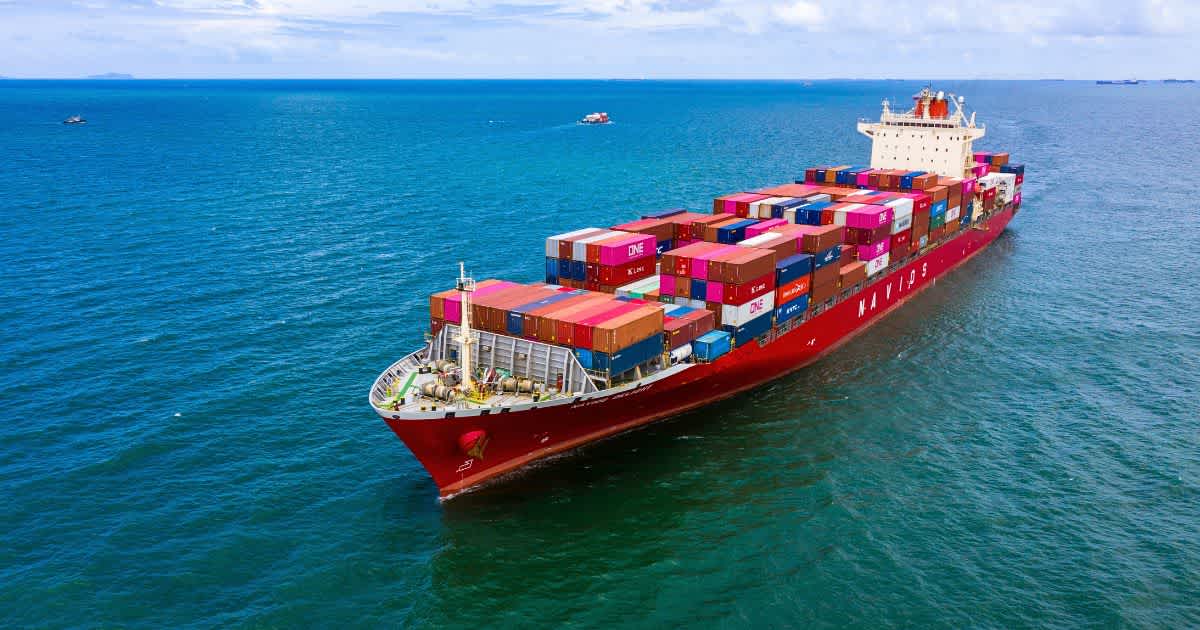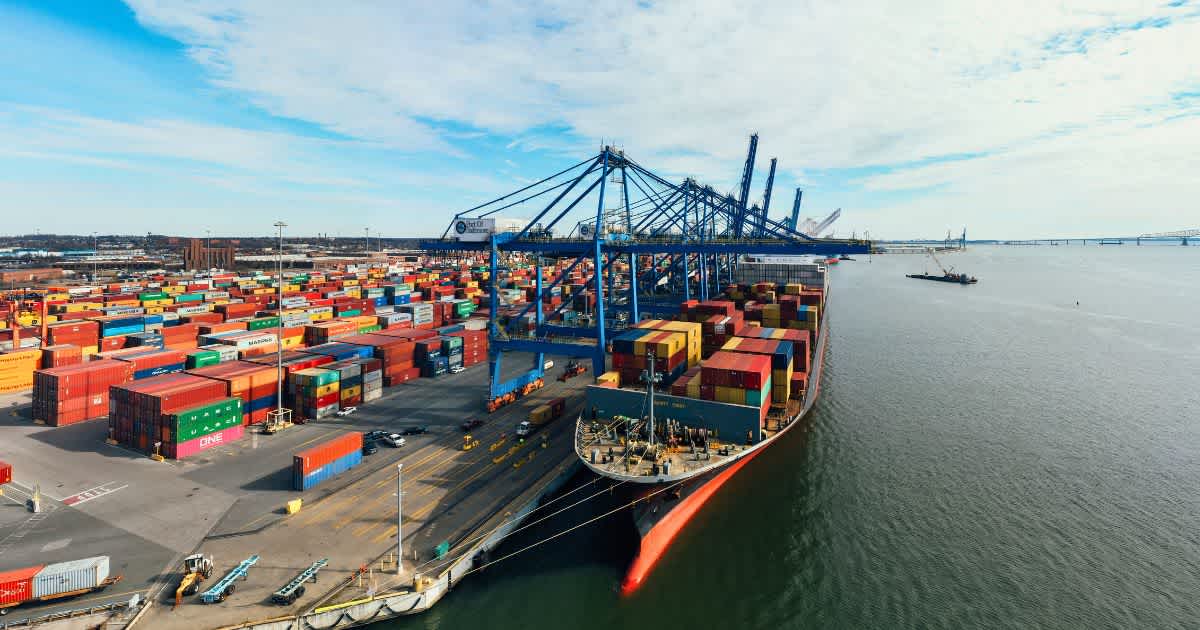Table of Contents
- What exactly is the North Passage?
- The current case: The Istanbul Bridge
- How long does it take for a container ship to travel from China to Germany?
- Advantages of the new container ship route
- Challenges: Freight route not yet suitable for mass transport
- What does this mean for importers in Germany?
- Sea freight containers: current prices and outlook
- Future prospects: Will the Northern Passage become the new standard route?
- Conclusion: New route – new opportunities
New China–Europe freight route: Northern Passage
Reading Time: 4 min.

More efficient, faster, more strategic: the new route for freighters between China and Europe
A change is looming in international logistics. A new freight route via the so-called Northern Passage has the potential to revolutionise the traditional maritime trade link between China and Europe. In future, container ships and freighters could bypass the Suez Canal and cross the Arctic instead.
But what does this mean in particular for imports from China to Germany, for the costs of sea freight and for companies that depend on efficient supply chains?
What exactly is the North Passage?
The Northern Sea Route, also known as the Northeast Passage, is a maritime trade route along the Russian Arctic coast. It connects the North Pacific with the North Atlantic and thus represents an alternative to the traditional route through the Suez Canal.
Due to climate change, Arctic sea ice has now receded so far during the summer months that parts of this route are ice-free or at least passable, provided the freighter has the necessary technology and permits.
The current case: The Istanbul Bridge
The container ship Istanbul Bridge provides an example of the new freight route. The freighter recently covered the distance from China to Europe via the Northern Sea Route in around 20 days, which is a new record time.
By comparison, the journey through the Suez Canal takes an average of around 30 to 35 days, depending on port stops, weather and capacity utilisation. The route via the Arctic not only saves time, but also operating costs, and can avoid bottlenecks on traditional sea routes.
How long does it take for a container ship to travel from China to Germany?
The answer depends greatly on the route:
Route | Average transit time |
Suez Canal | 35-45 days |
Northern Sea Route | 20-25 days |
Kap Route | 55-65 days |
Rail freight (China–Duisburg) | approx. 21 days |
Air freight | 3-7 (teuerste Option) |
While air freight is unbeatably fast but expensive, and rail transport through Central Asia involves greater logistical effort, the Northern Sea Route offers a new realistic alternative for larger freight shipments with reliable transit times.
Further information on the different types of freight can be found in our article: Freight types: air freight, sea freight, rail.
Advantages of the new container ship route
1. Time savings
Fewer days at sea mean faster availability of goods, which is a huge competitive advantage in global supply chains.
2. Cost savings
Lower fuel consumption, shorter layovers, reduced storage and capital commitment costs: the new route could also have a positive long-term impact on sea freight container prices.
3. Flexibility in case of bottlenecks
Disruptions in the Suez Canal, such as the Ever Given incident in 2021 or attacks by Houthi rebels on merchant ships, show how dependent global trade routes are on individual bottlenecks. The Northern Sea Route is a welcome alternative.
Challenges: Freight route not yet suitable for mass transport
Despite all its advantages, the Arctic route is still in its infancy. Currently, only selected freighters with special ice class (e.g. Arc7 ships) sail on the route. Navigability also depends heavily on the season, as the route is completely frozen over during the winter months.
Political and regulatory aspects also play a role. The Northern Passage runs mainly through Russian territorial waters, which requires access permits, cooperation and, in some cases, icebreaker support.
What does this mean for importers in Germany?
For companies that regularly import products from China, it is worth keeping a close eye on developments. This applies in particular to:
E-commerce retailers who depend on stable delivery times
Industrial companies that move high freight volumes
Logistics service providers who want to integrate new routes into their networks
A strategic advantage can arise if the new route leads to reliable sea freight times and can also be planned seasonally.
Sea freight containers: current prices and outlook
Current sea freight container prices are subject to significant fluctuations. Bottlenecks, strikes and political crises regularly cause price spikes. New routes such as the Northern Sea Route could help to stabilise the market, especially if more providers start offering services on this route.
Long-term potential:
Lower price volatility
Greater reliability during peak periods
More favourable conditions due to competitive pressure
Future prospects: Will the Northern Passage become the new standard route?
It is still too early to talk about standardisation. The route is seasonally viable and technically challenging. But the first step has been taken.
With increasing ice melt, technological progress and growing interest in alternative routes, it is likely that we will hear more about freighters on the Northern Sea Route in the future and, with it, faster transport from China to Europe.
Conclusion: New route – new opportunities
The container ship route via the Northern Sea Route is more than just a logistical option. It is a strategic tool for companies that want to make their supply chain future-proof and efficient. Faster transit times and potential relief for traditional sea routes offer real advantages in international trade.
Especially for complex shipments from China to the UK, it is worth taking a holistic view of route selection, cost structure and delivery times. This is exactly where we at Line Up come in:
With our full-service sourcing approach, we take care of the entire import process for our customers, from ordering from the supplier to logistics and import processing, including customs and documentation.
We continuously compare all available freight routes, whether via Suez, rail, air or even the Northern Sea Route, and always select the optimal combination of cost, transit time and availability for you.
Would you like to manage your supply chain digitally, transparently and efficiently?
Then register now for free on our digital supply chain dashboard.
Here you can keep track of all your imports, freight rates and delivery dates centrally and in real time.
Newsletter Registration
Sign up now for our free Line Up newsletter and stay up to date.





